There’s never enough time when managing a project. That’s why we make schedules—to try and control time, just enough to get your deliverable by the deadline. Sometimes, however, things go awry. Changes in a project are common of course, but it’s the project manager’s responsibility to make sure that those changes don’t produce a negative impact on the project schedule.
This is when the triple constraint usually comes into play; scope, time and budget. If one falls behind, the others have to make up the slack. There are many ways to adjust things on your project to make up for the time you’ve lost. That includes adding extra resources along the way, which is a method called project crashing.
What Is Project Crashing?
Project crashing is when you shorten the duration of a project by reducing the time of one or more tasks. Crashing is done by increasing the resources to the project, which helps make tasks take less time than what they were planned for. Of course, this also adds to the cost of the overall project. Therefore, the primary objective of project crashing is to shorten the project while also keeping costs at a minimum.
Just as the triple constraint says, if you reduce the duration of the project, or its time, then costs will in turn have to increase. It’s a trade off. Crashing project management accounts for the triple constraint, in that to achieve it, you include additional resources or reduce the project requirements or scope. However, such drastic measures cannot be implemented without the sponsor or primary stakeholders agreeing to the changes.
A result of project crashing can be a change to the critical path and the emergence of a new, different critical path. Project crash management requires that you return to your project schedule to make sure you’re aware of changes that have occurred there because of the project crashing.
All of this is made easier by project management software with scheduling tools. With ProjectManager, you can build a project schedule in a matter of minutes on our Gantt charts, and then filter for the critical path. From there, you can make all the necessary changes you need to adjust your schedule and deliver on time and under budget. Get started for free.
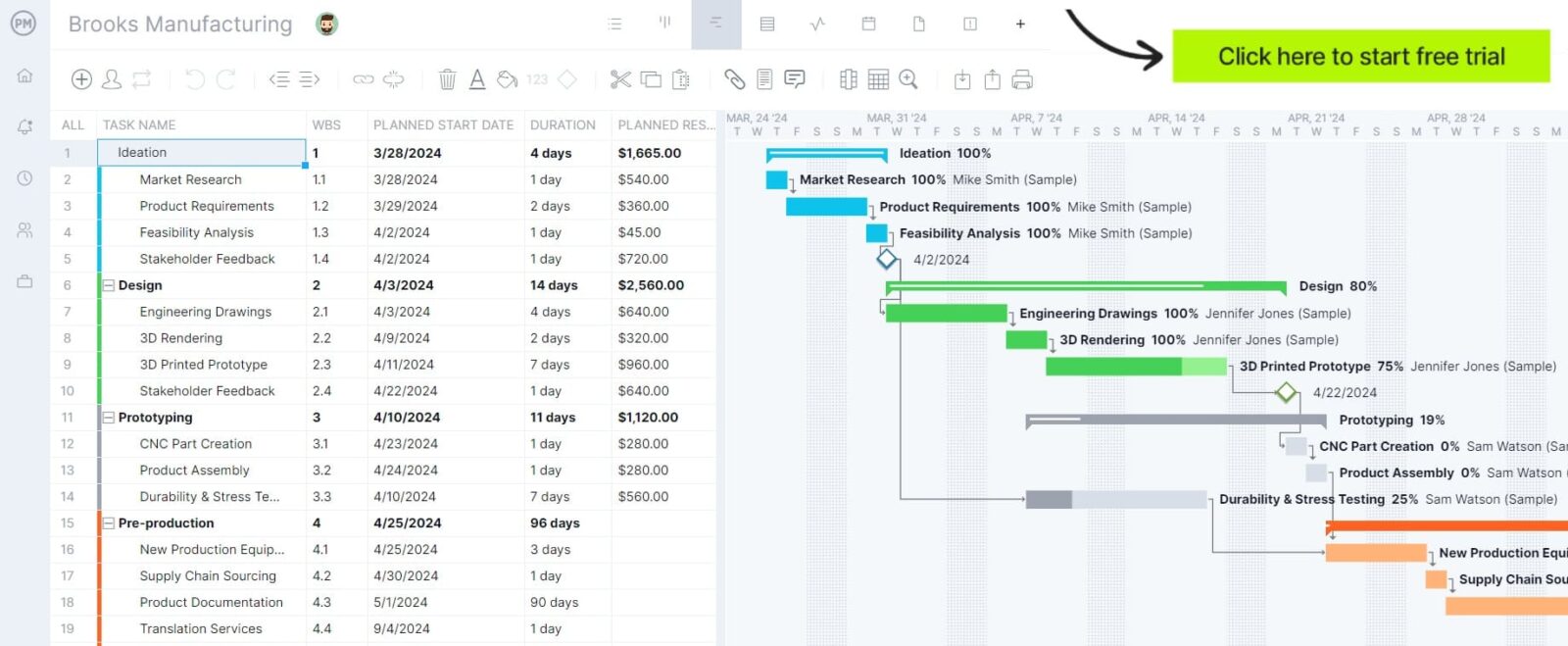
Different Interpretations of Project Crashing in Project Management
Project crashing as a term is not etched in stone and can mean a few different things. It could refer to spending more money to get things done faster. It can also refer to pinpointing the critical path, providing greater resources there, without necessarily thinking about being efficient. Or, you can review the critical path and see if there are any activities that can be shortened by an influx of resources.
A related method for truncating your schedule is called fast-tracking. This is when you overlap tasks that were originally scheduled to run separately. But, this course of action should not be taken without first analyzing its feasibility and risk. Whichever route you take, it’s always wise to give it thought and analysis.

Get your free
Critical Path Template
Use this free Critical Path Template for Excel to manage your projects better.
What Prompts Crashing in Project Management?
When would a project manager want to increase investment to complete the project earlier? After all, a lot of time and effort went into the project planning and schedule. Obviously, since project crashing requires higher costs, it wouldn’t be used unless there’s an emergency.
One reason for using project crashing would be if the project was scheduled unrealistically, and this wasn’t clear until the project has already been executed. This can even happen at the planning stage if the sponsor, customer or stakeholder insists on a due date that isn’t feasible.
Another reason is that, during the process of a change control analysis (which shows impact on the time, cost, scope or other project factors), an issue comes up that must be addressed immediately. As issues arise in the course of managing a project that takes it off track, the project manager must figure out a way to lock back to the schedule baseline.
As noted above, other than project crashing, there is the fast-tracking method. Though we’re discussing project crashing, it’s important to touch on when fast-tracking is preferable. Sometimes you can use either, but if the project is already over budget and you don’t have funds, then fast tracking is the likely option.
Best Practices When Crashing Your Project
Project crashing is usually a last resort, and it’s not without substantial risks. There are some things you need to consider before taking your project down this road. For one, are the tasks you’re looking to crash on the critical path? These tasks are going to impact the delivery of your project. If the tasks aren’t in the critical path, you can probably ignore them.
Another thing to consider is the length of the tasks. A short task will be hard to speed up, especially if it doesn’t repeat throughout the project. Long tasks are going to usually have some fat to trim. But regardless of the task, you need to have resources available. If you don’t have access to the right resources, then it makes no sense for project crashing. Having to get new materials or team members is likely going to be too costly to be effective.
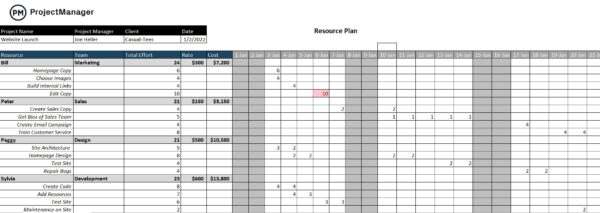
Another consideration is if it would take too long to ramp up the project crashing; for instance, if the project involves very specific skills and onboarding new team members would be costly and time-consuming. While it might seem logical to crash at the end of the project when it is becoming clear you’re not going to hit your target, most experts suggest avoiding that scenario. Project crashing is most effective earlier in the timeline—usually when a project is less than halfway done.
What Project Management Roles Are Involved in Project Crashing?
There are several key players involved in project crashing, and it’s a collaborative process.
- Project Managers: Project managers are the central figures as they are responsible for deciding when and how to crash a project. They help manage resources and oversee changes made to the project schedule. The project manager will communicate any changes to all stakeholders.
- Team Members: Team members are also involved as they might need to work longer hours or adapt to new assignments. They must cooperate and remain flexible.
- Major Stakeholders: Stakeholders such as clients or sponsors may drive the need for project crashing due to changing requirements or deadlines. Other involved roles include resource managers or financial teams.
When it comes to getting approval for project crashing, there isn’t a streamlined process. In smaller companies, the project manager might have more autonomy while larger corporations may need approvals from multiple layers of management. Generally speaking, the project manager, project sponsor, client or senior management team are all involved in the approval process, as they’re involved in the project’s schedule and budget.
Project Crashing Management Stages
Once you’ve made the decision to use project crashing, there are some steps you’ll want to follow to get the results you want.
1. Critical Path Analysis
The first thing to do is analyze the critical path of your project. This will help you determine which tasks can be shortened to bring the project to a close sooner. Therefore, if you haven’t already, calculate your critical path and see which tasks are essential and which are secondary to the project’s success.
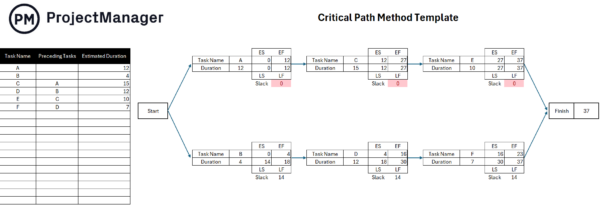
2. Identify Tasks
Get a list of all the tasks you have, then meet with those who have been assigned to complete them. Ask if they believe any of the tasks they’re responsible for are in the critical path and can be cut down. Then, start looking for ways to tighten up those tasks.
3. What’s the Trade-Off?
Once you’ve narrowed down the tasks in the critical path that you believe can be shortened, start calculating how much adding more resources will cost. Find the tasks that can be allocated additional resources, and come in sooner with the least amount of strain on your budget.
4. Make Your Choice
When you know what you will have to spend (compared to how much time you’ll save) for each of the tasks in your critical path, you must now make a decision and choose the least expensive way forward. Project crashing is not just adding resources to get done faster, but it’s getting the most in return for that extra expense.
5. Create a Budget
Like any project, once you’ve decided on your plan, you have to pay for it. Making a project-crashing budget is the next step in executing your project-crashing plan. You’ll have to update your baseline, schedule and resource plan to align with your new initiative.
Crashing in Project Management: Examples by Industry
To better understand the concept of project crashing, let’s delve into some examples by industry.
Project Crashing in Construction
In construction projects, project crashing can help meet deadlines, recover from delays or keep up with client demands. The goal is to reduce the project’s completion time while minimizing any added costs. If a building project is running two weeks behind schedule due to rain delays, the project manager needs to adjust. They may authorize work to be completed over the weekend, hire extra concrete workers or pay for expedited delivery of steel beams. As a result, costs increase but the project can meet its deadline.
Project Crashing in IT
IT projects can also benefit from project crashing, and the focus is typically on shortening the critical path. However, this can lead to challenges like rushed development, integration issues, security risks and more. For example, if a company is working on upgrading its operating system by a particular deadline, it may bring in outside contractors and consultants to help while the internal team works extended hours. This increases costs but keeps the project on schedule.
Project Crashing in Manufacturing
The goal of project crashing in manufacturing is to compress the production schedule while minimizing its impact on cost and quality. This can be accomplished through resource allocation, outsourcing, increased workforce, reducing setup times and more. If a company wants to launch a new product before a competitor, for example, it may accelerate production by investing in new equipment and streamlining the assembly process. Even though this is an investment, it can help the company launch the product on schedule.
Project Crashing in Event Planning
In event planning projects, project crashing revolves around reducing the timeline to prepare for the event without taking away from its quality. This may consist of expediting vendors, prioritizing resources or simplifying the project scope. When an event planner learns that the venue unexpectedly cancels a few days before the event, they need to find a new venue, renegotiate contracts and adjust logistics as quickly as possible. Although more expensive, this route can help ensure the event goes smoothly.
How ProjectManager Makes Project Crashing Easier
Project crashing involves knowing your resources and then reallocating them. If time is working against you, then this process needs to be as efficient as possible. ProjectManager is an award-winning software that tracks your resources, teams and projects to boost productivity.
Track Resource Costs
All your resources can be identified with our resource management tools, from teams to supplies, equipment and more. When you add the hourly rates to the project, you can see them across all our software features. Once you team logs their hours, we calculate the actual costs for you. Then, they can be compared to the planned costs, so you know immediately if you’re on target.
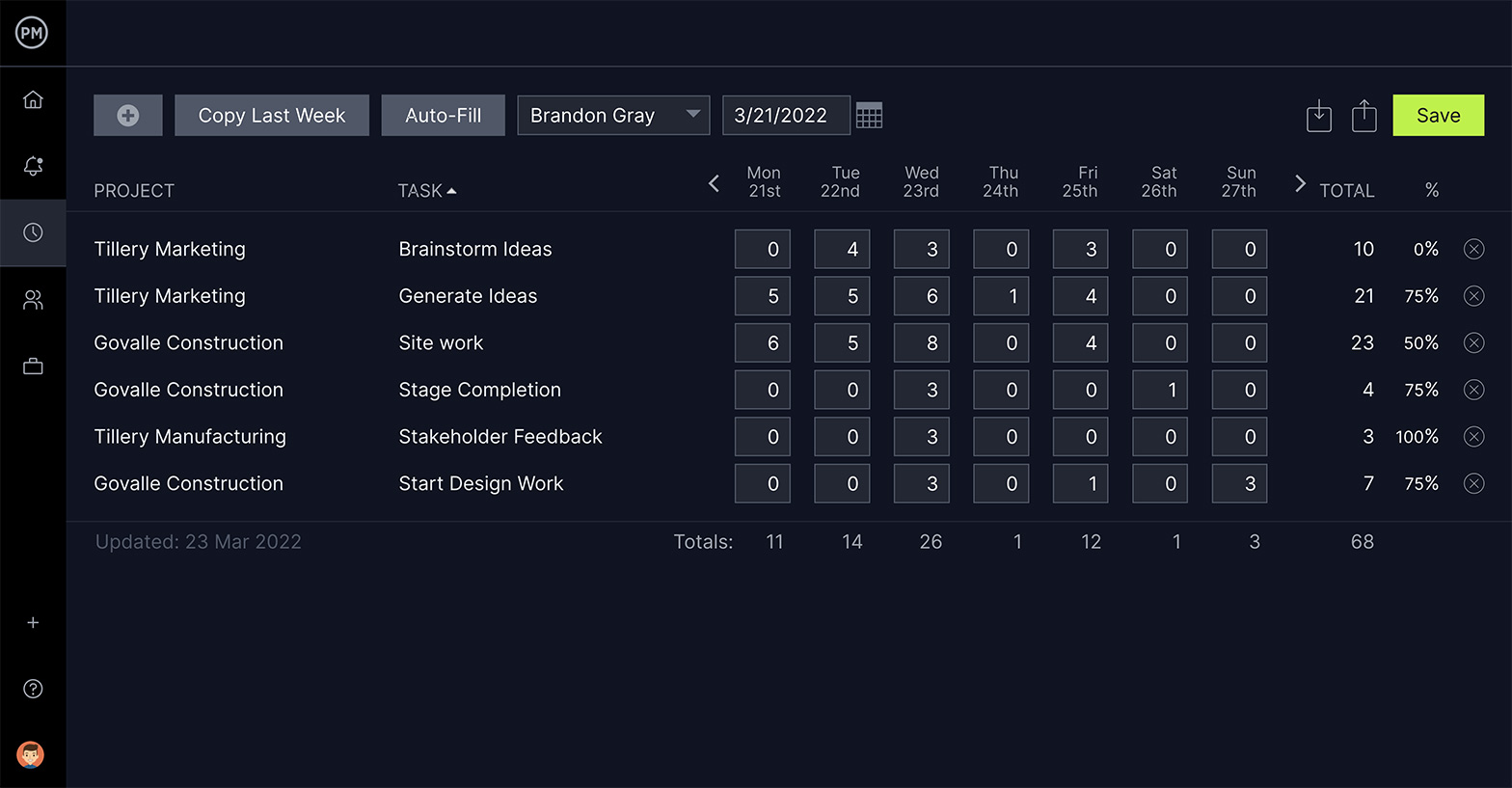
Use the Gantt to Schedule Resources & Tasks
Use our online Gantt chart tool to schedule your resources. Assignments can be made while in this view. A popup window will also tell you how many hours your team member is working, and if they have too many or too few tasks assigned to them. The Gantt will also filter the critical path, estimate planned costs for your resources and set a baseline. You can even track progress on the Gantt, or by using our real-time dashboard.

Balance Your Team’s Workload for Efficient Project Crashing
To make sure your project crashing management plan isn’t overloading some of your team while others are under-allocated, use the workload page. On the color-coded chart, you can easily see who has too many tasks, balance the workload or assign them to the project crashing.
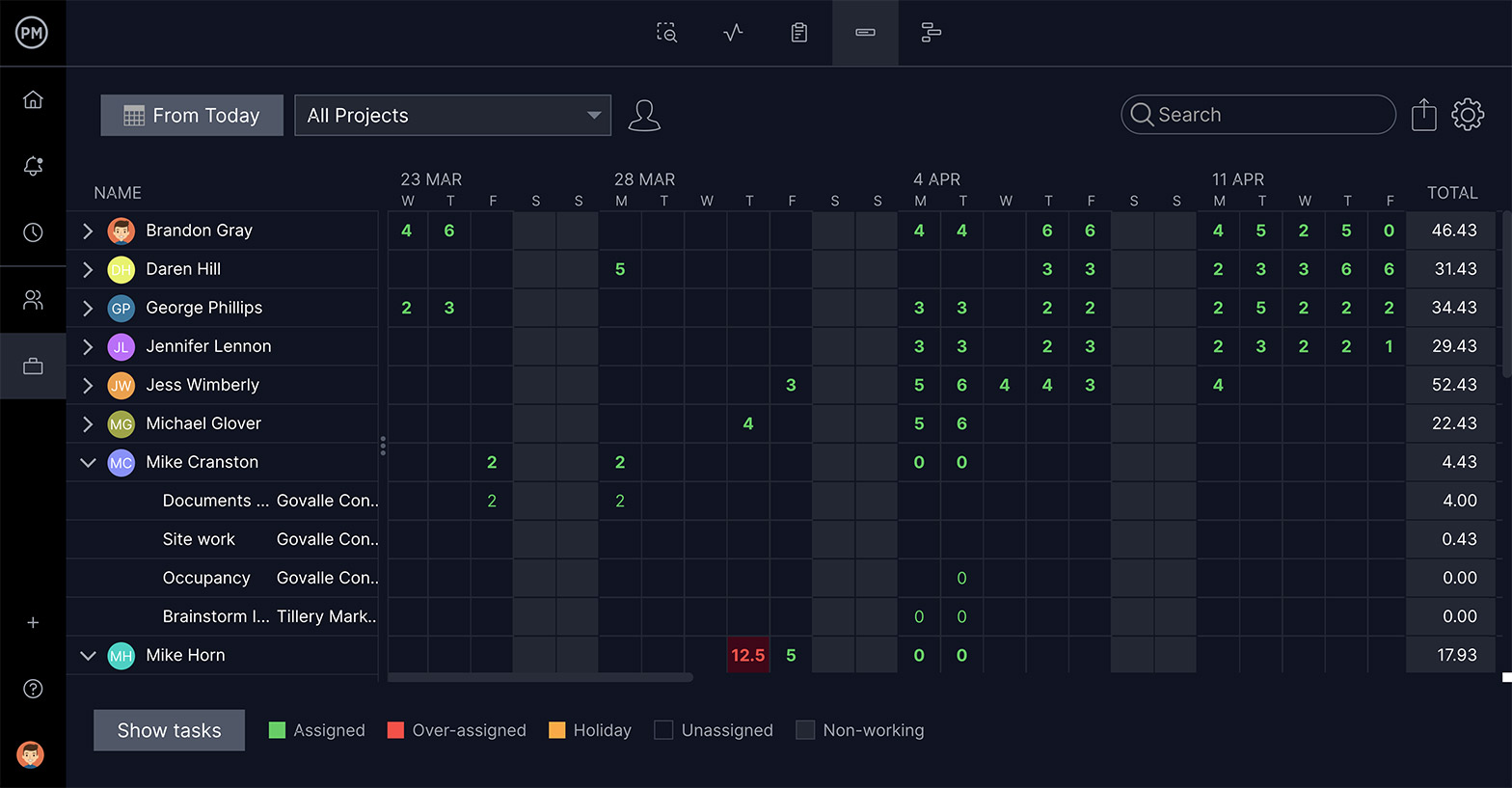
ProjectManager gives you the tools to control your resources and quickly move them around to execute your project crashing management. You can plan it on our Gantt chart, track progress on the dashboard and even report to stakeholders with reports that can be filtered to show them the data they ask for. See why tens of thousands of teams at organizations are using our software. Take this free 30-day trial now.

